What are the best oil paints for painting miniatures? For most miniature painters, acrylic model paints have been the standard media. But, oil paints have a definite place in miniature painting, especially for scale modelers, and even for wargame model painting like those for Warhammer 40k, Age of Sigmar, or Bolt Action.
In this article, I show you some of the key features and techniques you should know about using oil paints for miniature painting. I also review the top 10 best oil paints for miniatures and models.
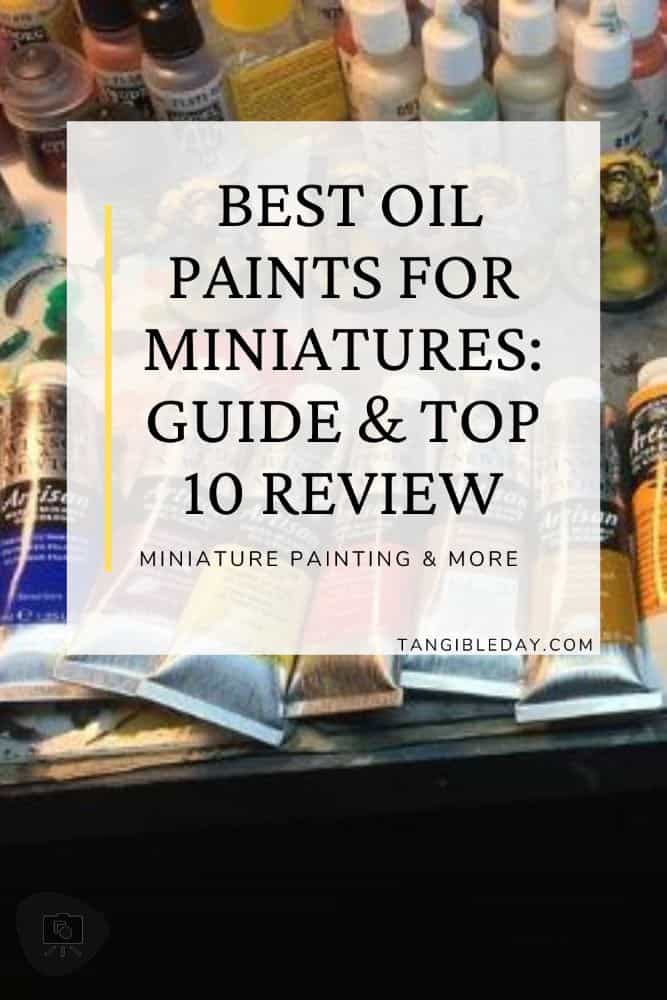
Here are the best 10 oil paints for painting miniatures and models:
The reason oil paints are less common among mini painters is due to their extended dry time, solvent or thinner requirement, potential toxicity, and longer clean up. Brush work and blending techniques with oil paints is also very different than acrylic painting. However, with some knowledge and practice, you’ll find the benefits of painting miniatures with oil paints can far outweigh many of its drawbacks.
Continue reading for more details about painting model figures with oils and miniature painting, or skip ahead to the review of the top 10 oil paints for miniatures!
In a hurry? Take a look at the top 3 editor’s picks! 🥇
- Winsor & Newton Oil Colour Paint (Best overall)
- Blick Studio Oil Colors (Budget)
- Gamblin 1980 Oil Color Set (Huge color selection)
Are Oil Paints Safe?
Oil paints have been around for hundreds of years, and often have historical chemical formulations that may contain toxic chemicals.
Although conventional miniature painting uses non-toxic acrylic model paints, and there are good reasons to lick your brush (i.e., to keep a fine bristle tip, for example), oil paints can be harmful if consumed. Note that almost all modern oil paints are generally non-toxic, if you use them as intended (e.g., not eaten, inhaled, snorted…). Color pigments in oil paints are also safe if you get any on your skin. Just wash the paint off your hands before eating or doing anything else (source).
A good rule is to avoid sanding oil painted surfaces, which could kick-up dried oil paint particles that you may breath in.
Here are a few chemicals you may find in oils that that you should avoid consuming or inhaling (e.g., dried paint particles):
- White oil paints can contain dangerous chemicals, i.e., lead-white, flake white, foundation white, cremnitz white (read the label)
- Cadmium
- Cobalt
- Chrome
- Barium
- Lead
Other dangerous chemicals and agents you may work with when painting with oil paints include solvents like turpentine and mineral spirits. Both turpentine and mineral spirits produce harmful vapors. My recommendation is to use low- or odorless mineral spirits (or white spirits) as your oil paint solvent and thinner, and work in a well-ventilated area.
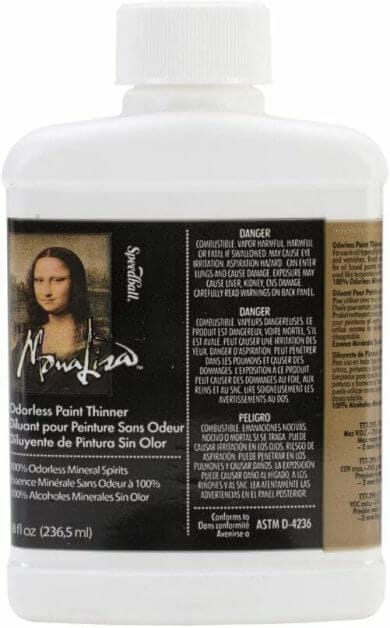
In traditional painting, linseed oil is another additive you can use. For miniature painting, adding more oil to your oil paints isn’t really necessary. But it’s interesting that almost all oil additives for oil paints are not toxic, and in some cases edible.
Linseed or poppy oil are thinners for oil paints that make the paint medium more “oily” or “fatty”, which is useful for making your paints smooth and consistent. Thin your oil paints with oil additives for glazing and other technical effects.
Suffice it to say, a reason why there aren’t more miniature painters or scale modelers using oil paints is due to some of the safety risks. For younger hobbyists, working with turpentine and mineral spirits, for example, could be a non-starter for supervising adults. However, if you have good working and cleaning practices, painting miniatures with oil paints is completely safe.
Why Paint Miniatures with Oil Paint?
There are 3 reasons why painting miniatures with oil paints may be advantageous:
- Longer working time
- Easy color blending
- Natural transparency
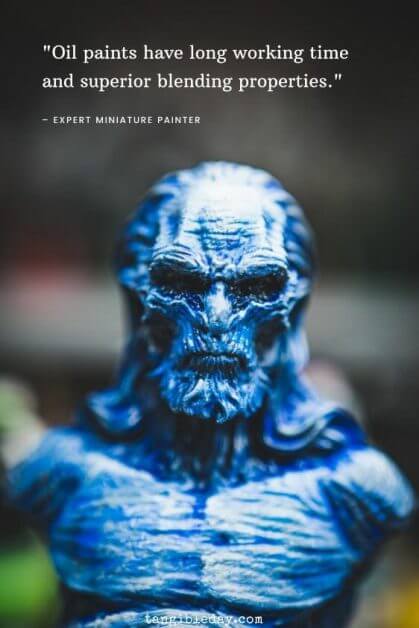
Longer working time
Oil paints take a long time to dry (or cure). As a result they have a really long working time. You can apply oil paints to a surface and move it around with your brush for hours, or even days. Although some of you may consider this a drawback, especially those of you planning to paint an entire army of miniatures, this slow-drying property permits you to play with color and fix mistakes as they happen.
In contrast to acrylic model paints, which dry fast, oil paints are a medium for those who like to create with a considered pace. Put paint down, take a step back, move the color somewhere else. You don’t have to plan everything ahead of time.
Easy color blending
Oil paints allow you to blend colors with ease, as compared with the more advanced blending techniques required with acrylic paints. With oil paints, the slow cure time allows you to create a “painterly” look or a very “smooth” appearance to your paintjobs.
Briefly, here’s an example of how to blend oil paints on miniatures:
- Take some oil paint on your brush (straight from the tube) and apply it to your model.
- Then, put a second color nearby.
- To blend the two colors, use a clean and dry brush (a flat headed brush works best), and sweep/swirl/dab/stroke your colors together.
- You can apply different brush strokes to create the blended appearance (e.g., textured or smooth)
- Use a little mineral spirits to clean up any mess or stray brushstroke
- You have a lot of time, because the oil paint won’t dry right away
Generally, if you’re aiming for a textured look, you apply thicker layers of oil paint. For smoother blends, you may want to thin your oil paints on a palette (like these affordable ones) before applying it to your model’s surface. The ease of creating smooth blends with oil paints is incredibly useful for the non-metallic metal (NMM) painting style.
The best oil paints for miniatures are those that have a good balance of oil binder and pigment content that allow you to smoothly apply color to your model’s surface, or have very finely ground pigments that dissolve evenly in solvents, like mineral spirits.
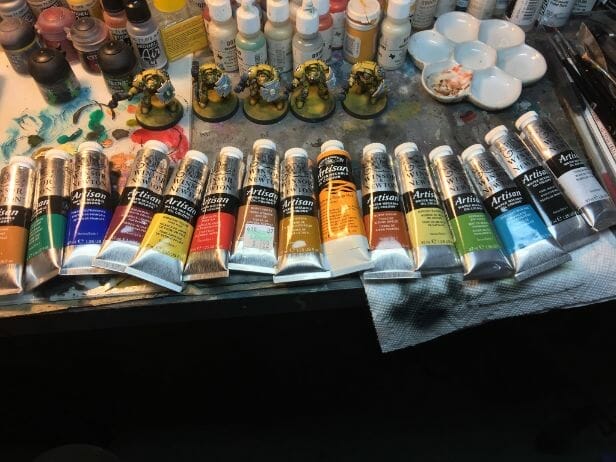
Natural transparency
For miniature painters, oil paints have been especially popular for making washes and color filters. By their very nature, oil paints are transparent colors. Whereas acrylic paints begin as an opaque medium, oil paints are fantastic to work with as transparent glazes or washes (more about this below).
RELATED: BEST 7 WASHES FOR MINIATURES AND MODELS
Take your oil paint and dilute the color with a little mineral spirit solvent and you can create a wonderful wash. The best part, of course, is that you can apply your wash over a miniature and, because of the longer working time, clean up any excess wash without worrying about ruining your underlying paint job.
To wipe up excess oil paint, you can use a cotton tip applicator, a cosmetic sponge, or (if you’re like me) use a piece of old foam from a model’s blister pack.
Additionally, oil paints come in an unlimited number of colors, each of which could become a wash or glaze.
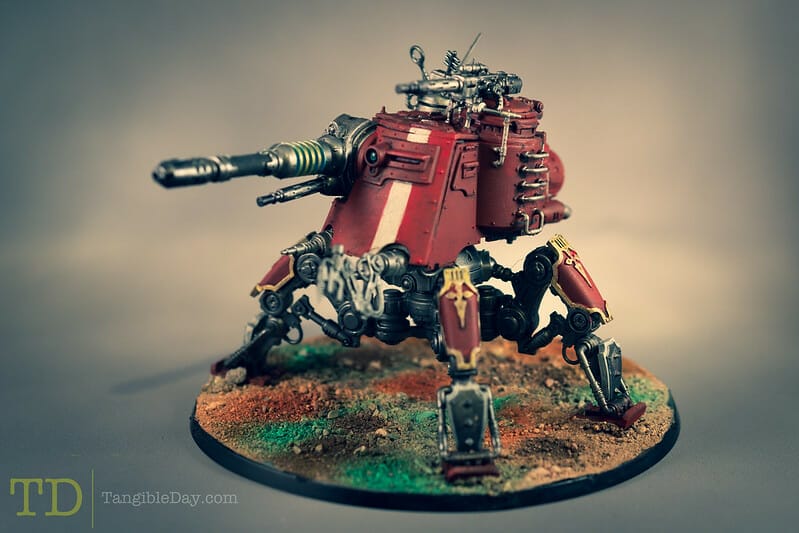
If you’re looking for an oil paint wash equivalent for Citadel washes or shades try these:
- Nuln Oil, use lamp black oil paint
- Agrax Earthshade, use burnt umber oil paint
- Seraphim Sepia, use sepia oil paint
- Reikland Fleshshade, use burnt sienna oil paint (mixed with a little cadmium red)
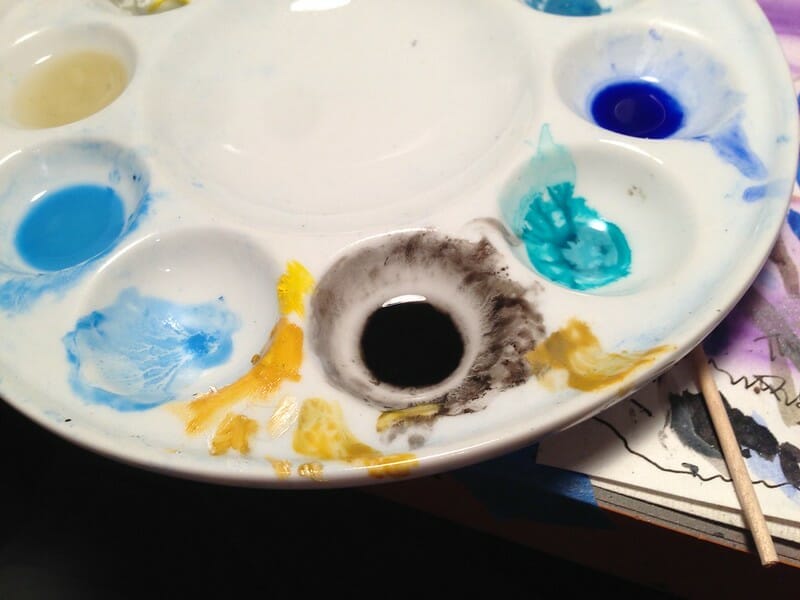
Thin these oil paints with mineral spirits until they become runny. It’s okay to keep them thicker than regular acrylic washes. You can always thin oil paints even after they are on your model by apply straight clean mineral spirits over the model with a brush. Of course, you’ll have to experiment to create the right color tones and dilutions for your oil paint washes to meet your preferences.
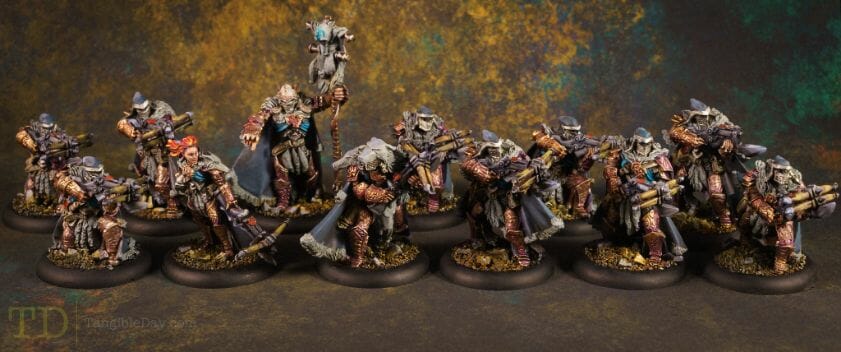
There are 3 main disadvantages working with oil paints:
- Long cure (dry) time
- Requires solvent for thinning and cleaning
- Technically more challenging to use
Long cure (dry) time
The oil paint property that gives it an extended working time is a double-edged sword. Although the long working time allows you to play with the color and help you blend paint to your heart’s content, it’s a pain in the butt. You can expect to wait hours or days for your oil paint job to dry.
You can speed up oil paint cure time by using a hair dryer, which I recommend to any miniature painter. But, you’ll need to keep the hair dryer in the lowest setting and apply the heat from a good distance. If you don’t, you’ll find the surface of oil paint will dry too quickly and crack, while the paint below stays soft and wet.
Ultimately, oil painting your miniatures requires you to be patient. It forces you to go slowly, which for many of us is a good thing!
Requires solvent for thinning and cleaning
Oil paints don’t dissolve in water. There are some water-mixable oil paints available (a miracle of modern chemistry in the art world), which I review further below. But, even these oil paints require a good solvent to behave properly for painting miniatures. And, if you’re looking to clean up your work area after painting with oils, you’ll also have to use an appropriate solvent or detergent/soap.
For your brush care after oil painting miniatures, I highly-recommend you use Masters Brush Cleaner and Preserver. It’s a formulated soap that cleans and conditions your brushes. This is particularly important for natural haired brushes, like kolinsky sables.
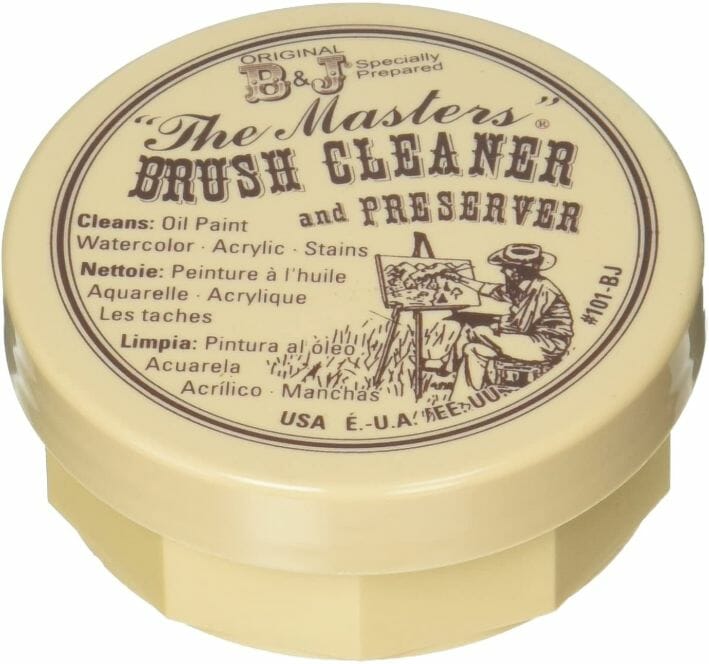
To thin oil paints, as mentioned, you’ll want to use a solvent like turpentine or mineral spirits (i.e., don’t use turpentine, it stinks, literally). For miniature painting, the best way to thin oil paints is to use an odorless mineral spirit. The exact ratio of paint to spirit mixture for thinning is between 1 part paint to 1-5 parts spirits (depending on your intended application).
Technically more challenging to use
A major limitation of oil paints as compared with acrylic paints is the technical knowledge required to use oil paints effectively. You can’t dispense oil paints on your palette and expect it to behave like acrylic paint. Oil paint is slippery, but doesn’t always flow off your brush. On small surfaces like you find on miniatures, oil paints can fail to adhere to other oil painted surfaces underneath.
The good news, however, is that there is a huge library of historical knowledge about how to work with oil paints. Traditional oil painters have mastered the art of using oil paints on canvas and other 2D media. All you have to do is learn some of this “technical know-how” to use oil paint on your miniature sculpts.
Continue reading below for some of the must-know techniques for effectively painting miniatures with oil paint.
Pros and Cons of Painting Miniatures with Oil Paint
Pros
- Longer working time
- Easy color blending
- Natural transparency
Cons
- Long cure (dry) time
- Requires solvent for thinning and cleaning
- Technically more challenging to use
Bonus: Oil paints can help you paint Warhammer models with the “grimdark” look
If you’re painting Warhammer 40k or 30k (Horus Heresy) gaming miniatures and want the grimdark, grimy realism, oil paints are an easy way to achieve this look.
RELATED: HOW I PAINTED THIS INFINITY MINIATURE EXCLUSIVELY WITH OIL PAINTS
How do you use oil paints to paint grimdark miniatures? To create the grimdark look on Warhammer models, here is what you do:
- Paint your models as normal with acrylic paints, and add wet slide decals if you like using them. The more details you add here, the more realism you’ll achieve at the final steps.
- Create an oil wash using blacks, browns, and dark reds (see below)
- Make sure you add some brighter colors to add interest, e.g., yellows or blues
- Let your oil applications dry before adding more layers. You can speed this up with a hair dryer.
- Use clean mineral spirits to “wipe up” any places you want more underlying acrylic colors to show.
- Varnish your model with a good matte sealant
Although using oil washes are easier to use on larger models, like vehicles, such as tanks and flyers, you can use oil paint washes on smaller trooper models to get that war torn, grimdark look, too. Make sure to use clean mineral spirits to pull out the highlights again. You can see some examples in my gallery.
Continue reading below for tips and techniques for how to use oil paints to achieve the best results when painting miniatures and models.
3 Key Techniques for Oil Painting Miniatures
There are 3 rules you should follow when painting miniatures or models with oil paints.
- Fat over Lean
- Thick over Thin
- Slow Drying over Fast Drying
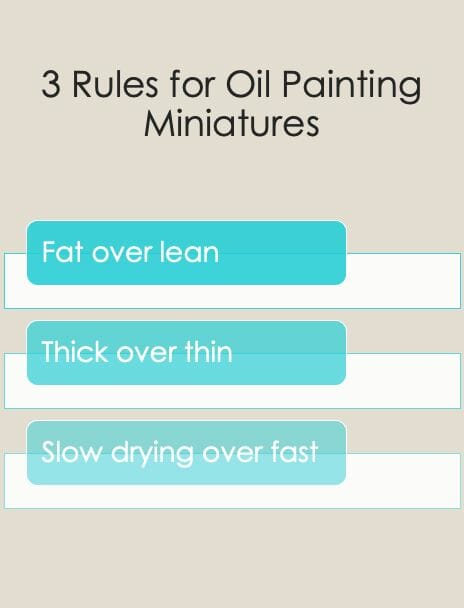
These technical guide rules are relevant for painting your miniatures directly with oil paints as a core technique. They may not apply if you’re primarily using oil paints as a wash over an acrylic base color (e.g., the more popular usage of oil paints).
Fat over lean
This is a principle for understanding what happens when you use additives with your oil paint. These additives may be solvents, e.g., mineral spirits, or oils, e.g., linseed oil.
When you add oil to your oil paint, you’re increasing the “fat” content in your oil paint mixture. On the other hand, when you add solvent to oil paint, the mixture you create is “lean”.
For painting miniatures (or traditional canvas), you should follow the “fat over lean” rule. Your basecoat layers should be oil color thinned with solvent (lean). Then your upper and final layers should have oil paint mixed with oils, such as linseed oil (fat).
The reason this is important is because lean oil paint with solvent dries faster than fatty paint. Solvents are volatile, that is, they evaporate quickly at room temperature, which speeds up your oil paint drying time. If you put fat paint under lean paint, the top layers will dry faster and crack.
Ultimately, the “fat over lean” rule ensures that your oil paint dries from the bottom-up (i.e., paint on model surface dries before to paint exposed above to air).
Note that for miniature painting, the fat over lean rule may not be as important because you won’t be layering very thick layers of oil paint on the smaller surfaces. In fact, you can expect most of your oil paint work to be “lean”, because you’ll be mixing it with mineral spirits almost all the time. You likely won’t need to use oil additives at all, e.g., linseed or poppy oil.
Thick over thin
This oil painting rule is similar to “lean over fat”. You want to apply your thinnest paints on your model’s surface before your thicker oil paint layers (which are more opaque and have better color coverage).
The reason this is important to remember is that oil paints cure (which is a chemical process of solidifying through oxygen exposure, e.g., oxidation). Basically oil paint is “cooked” by air, and the thicker oil paint layers require more time to fully change state.
If you follow the “thick over thin” rule, you’ll ensure that when you apply more oil paint over other painted layers, you’re not disrupting the curing paint surfaces below (which will cure as you work toward thicker paint layers).
For painting miniatures, the best practice would be to start with thin oil paint layers. Then, as you progressively add more color and paint, you can use thicker and thicker paint. Or, if you prefer like I do, use all thin oil paint layers and then add thick oil paint layers as accents after you’re nearly complete with your paint job.
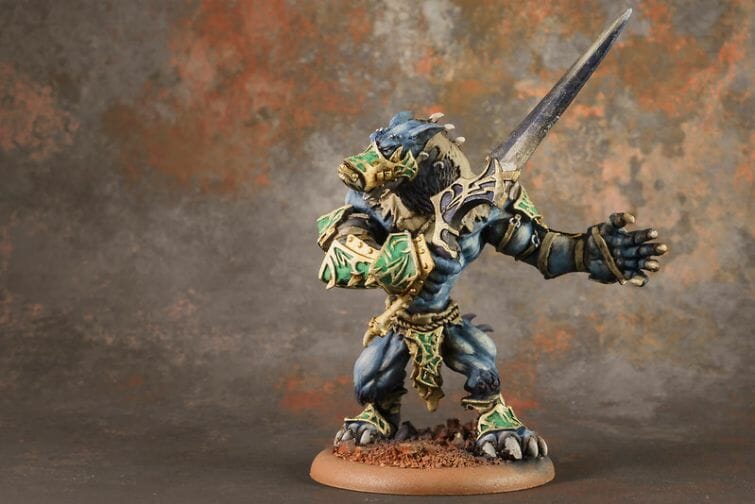
Slow drying over fast drying
As with rules #1 and #2, in principle you want your bottom first layers to dry faster than your top layers. Some oil paint colors dry faster than others. Only through experimentation or asking around will you know what oil paints have faster or slower cure times.
Fortunately, you can use additives that increase or decrease the cure time of your oil paints. So, you do have some control over how your oil paint behaves on your miniature and model surfaces.
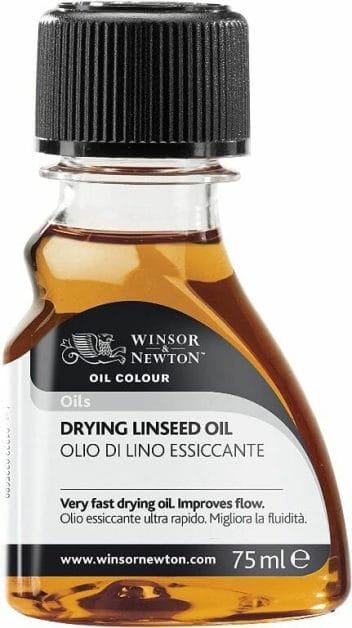
From a search around the internet, browns and other earth tones tend to dry fastest. This means if you’re using burnt umber oil effect as a wash or as a weathering effect, you can expect it to cure pretty much over night. It is well known that reds, blues, and yellows cure slowly. Black and white oil paints can also be slow to cure, especially if they are applied in thick layers.
Many established oil paint companies, like Winsor & Newton, publish their oil paint dry times for different colors and formulations.
If you’re confused about what techniques and approaches to use with your oil paints on miniatures, you can simply use all fast or slow drying colors. Or, use all “lean” and thin painting techniques. The list of three oil painting approaches (points #1-3) I highlight are simply to help you understand the basics of how oil paint will behave when you try and use them on your miniatures and models.
What About Oil Paint Washes and Filters?
For most miniature painters, you’ve probably heard about the popular use of oil paints as washes and color filters.
How do you use oil paint washes?
Here’s what you do:
A wash is a thinned version of your oil paint that you mix with a solvent to make it flow into the recesses of your model’s surface. To make an oil wash for painting miniatures, I mix 1 part oil paint to 3-5 parts of mineral spirits. As a guide, I tend to keep my oil-wash mixture a bit thicker than acrylic paint washes so I have room to thin my oil wash later when I’m applying it to a model.
RELATED: WHY YOU NEED A “DRY” PALETTE FOR PAINTING MINIATURES
How to make an oil wash: You know you have the right thinning ratio of oil paint-to-mineral spirits when you dab your wash brush on a clean paper towel. If the pigment spreads out on the paper towel at the same speed as the solvent (the clear liquid), then you have the right mixture ratio. If your wash’s pigment separate from the solvent on the paper towel, then your mixture is too thin.

A color filter is a thin film of colored oil paint that shifts the color underneath. Oil paints are great for making color filters over miniatures and scale models because they are naturally transparent and easy to smooth over any surface.
The dot filter technique, first developed in the scale modeling hobby, is a method for applying “dots’ of oil paint using a toothpick or small brush over the surface of a model. Then, using a clean dry brush, the oil paint dots are blended into the surface. You can either do this by “streaking the dots” or feather-blending the dots smoothly over the surface.
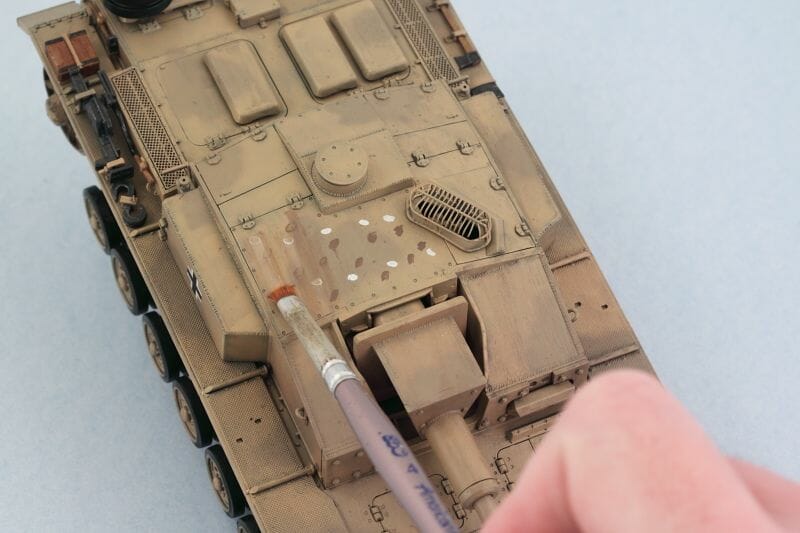
Oil paints add realism
The great thing about the technique of using oil paint filters on vehicles and armored tanks, e.g., Warhammer 40k or historical wargames like Bolt Action, is the realism this effect brings to your models.
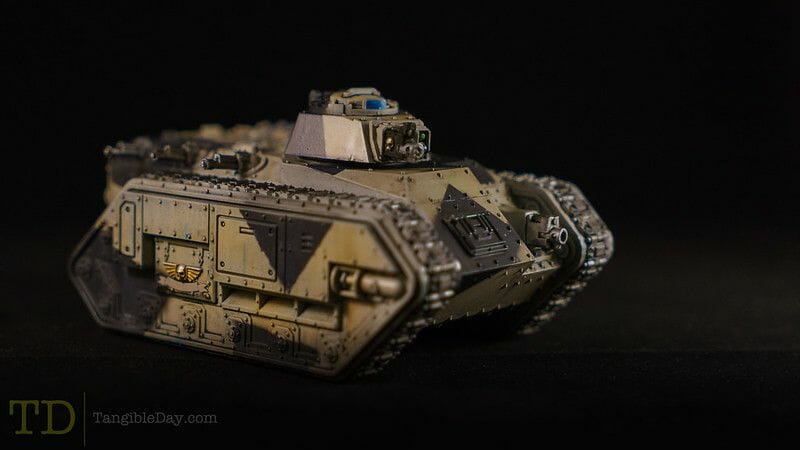
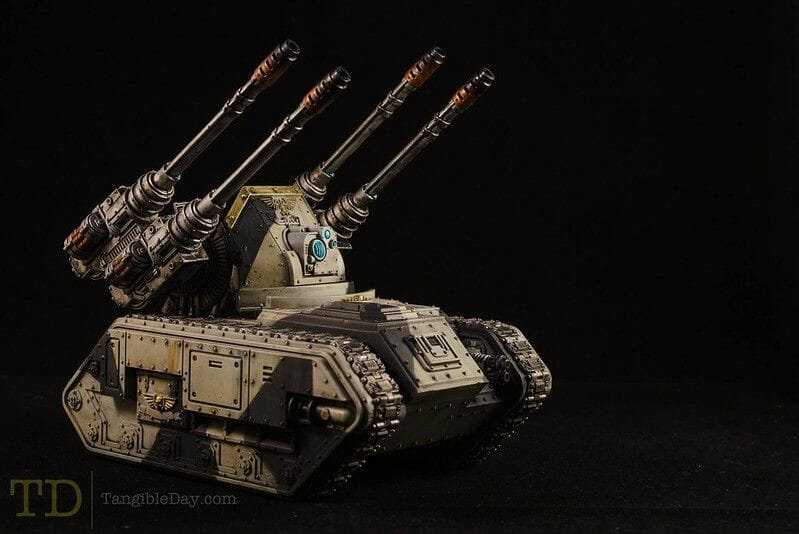
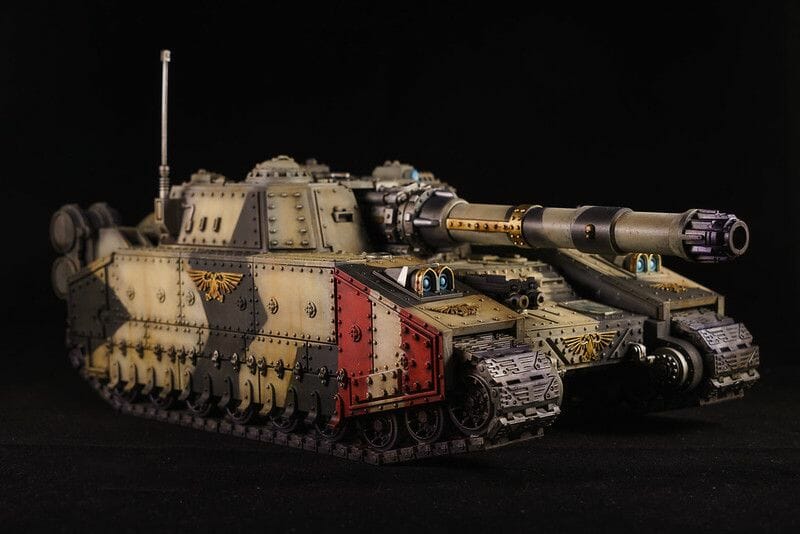
To use an oil dot filter, simply apply a dab of oil paint straight from the paint tube onto your model. Take your time. Randomly place the dots of paint over the surfaces you want to “tint”. Then, with a clean soft bristled brush, slowly massage the oil into the model’s surface. The best oil paints for this technique are those with fairly thick consistency and finely ground pigment, i.e., use high quality oil paint.
You can see some examples of some models I painted with oil paint washes and filters in my gallery. My brand preference for the color filter technique is Winsor & Newton oil colour paints. Here’s a great starter set if you’re looking to try oil paints on your miniatures.
MORE: HOW TO TRANSFER OIL PAINTS INTO PLASTIC DROPPER BOTTLES
For some miniature painters, oil paints are used exclusively for the entire model. James Wappel is a huge advocate for using oil paints for painting miniatures. Check out his YouTube channel here.
Speed Painting with Oil Paints?
A really cool technique you can use with oil paints is also a method for speed painting your models.
And, the transparent property of oil colors is a major reason why this speed painting works so well with oil paints.
RELATED: 3 WAYS TO PAINT HORDE ARMIES FASTER
To speed paint with oil paints, you should first know about glazing
A glaze is any color medium, e.g., paint or ink, that you apply over a surface to change the overall color of the final paint job. Although this may sound like the definition of a “filter”, a glaze is a more deliberate application of color in specific areas of a model.
To prepare your model for miniature speeding painting with oil color, start with a zenithal highlighted model. See this article about how to apply zenithal highlights. Then, with your oil paints, use a solvent or oil (I recommend mineral spirits) to thin the paint. The paint-solvent mixture should be thicker, more pigment heavy, than an oil wash. Apply this thinned oil paint glaze over the areas of your model you want to paint.
If done correctly, the black and white zenithal contrast underneath should automatically shade your oil paint glaze above. This allows you to add contrast AND color to your miniatures quickly. Using a small brush and practice, you can apply your oil paint glaze to select areas of your model. Use a hair dryer to speed up the curing process.
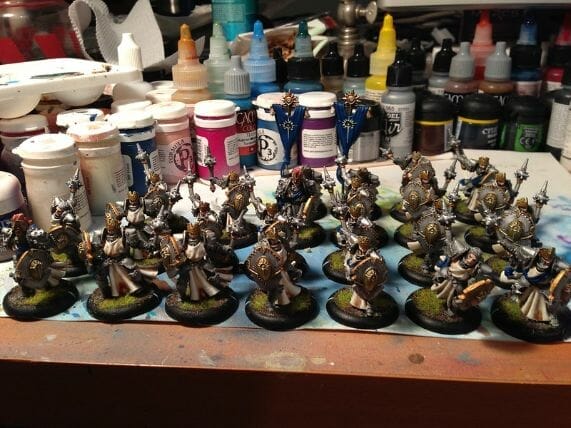
When you’re finished applying the glazes, you can add more color accents or highlights by using thicker oil paint (straight from the tube). And, if you want, you can blend these oil colors down using a clean, soft brush. With experimentation and practice, you’ll be able to quickly paint a large number of models.
“Student” Versus “Professional” Oil Paints for Miniature Painting
Okay, so what’s the difference between the budget brand of oil paint and those oils paint deemed “professional”?
Oil paints are similar to acrylic paints in that color pigments are suspended in a binding medium. In the case of acrylic paints, the binder is acrylic polymer and usually water-based/soluble. For oil paints, the binder agent varies a bit more. And, therein lies the difference between “student” and “professional” quality oil paints.
For most budget or student-level oil paints, the binding agent is linseed oil. Linseed is inexpensive, abundant, and even edible (non-toxic), all of which are great features for students just starting to learn how to use oil paints. On the other hand, linseed oil and equivalent binding agents may tend to change color, e.g., yellow or oxidize, over time.
For those learning how to paint miniatures with oil paints, the less costly binding agent formulation in student-level oil paints isn’t a problem. In fact, you should be varnishing your finished models with an proper sealant to protect the underlying paint and pigment.
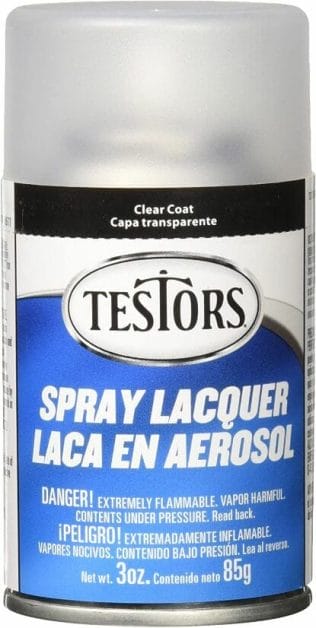
A matte varnish will not only protect your painted miniatures, but also even out the shine and gloss of your miniatures which helps maintain color contrast and vibrancy. For more about how to properly varnish your models, check out this post.
Professional grade oil paints differ than student or less expensive oil paints in that they have lightfast formulations that prevent fading.
Professional oil paints are archival grade, and will last decades or even centuries if protected from undue exposure to ultraviolet (UV) light, humidity, and oxygen. Some more expensive oil paints also have pigments that have a gritty texture or “tooth” that help it adhere to other oil color paints, which helps with blending, layering, and other technical effects.
In general for miniature painters, I recommend student level or starter oil paint sets, because our needs are different than canvas painters. We don’t use high levels of thinner, solvent or oil additives, and will often protect our painted models with multiple layers of varnish sealant.
In some cases, when painting miniatures, you may even want to remove some of the excess oil solvent from your paint tube before using the oil color. This gives you more control over the transparency of the paint when taken directly from the tube.
To remove excess oil binder from your oil paint, put some of your oil color on a scrap piece of cardboard or a wooden palette. Let the porous surface soak up the oil from the paint for a few minutes. When some of the oil in the paint has leached out, the oil paint is ready to use.
What Kind of Primer Do I Need for Painting with Oil Paints?
If you’re going to start your miniature paint job with oil paints, then you will still want to prime the model. You can use any normal model primer for this purpose. Here are a few primers that I highly-recommend you consider, with my favorite being Vallejo Surface Primer.
If you’re painting with a dark color, start with a light-colored primer. To paint with a brighter paint color, use a darker primer. Here, I tend to use a spray primer for the quickest, smoothest foundation coats. This will make your job of covering your first few base layers more enjoyable by avoiding the annoying (but harmless) brush streaks and splotches in the first few paint layers.
Your primer is what keeps your paint adhering to your model. Primers act as an interface or bridge between plastic, pewter metal, or resin surfaces and your oil paint. A primer has microscopic texture or tooth that helps oil paint pigments bind to the surface.
In fact, if you’re having trouble painting with oils, e.g., paint won’t stick, then consider switching your primer to one that has more intrinsic surface texture. Gesso primer is formulated with more surface texture to help paint stick. Make sure you keep your primer layers thin so you don’t cover up any fine details on your sculpt.
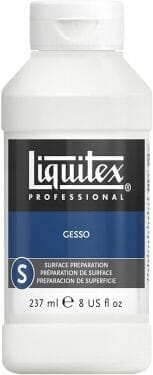
Do I Need to Varnish My Models after Painting with Oils?
Yes! Not only does a varnish sealant protect your oil paint on the surface of your miniature, but it also evens out the reflections on your model. This helps maintain color vibrancy and contrast.
Some oil paints tend to cure with a glossy finish. If you’re looking for the best overall look for your models, I recommend using a matte varnish. A matte varnish will remove the excess shine.
The best way to apply a varnish over an oil painted miniature is to spray it on. Brush on varnishes are risky because your brushstrokes may disturb the underlying oil paint layers. You can use an enamel lacquer varnish, like Testors Dullcote (preferred), or use a water-based acrylic varnish, like Liquitex matte varnish, that you can airbrush over your miniature if you’re averse to using aerosol spray cans.
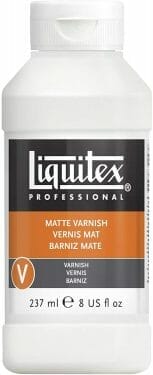
Top 10 Best Oil Paints for Painting Miniatures and Models
Here are my 10 recommended best oil paints for painting miniatures and models:
Winsor & Newton Oil Colour Paint are an affordable oil paint line and my favorite choice for painting miniatures. These oil paints come in a huge variety of colors. And, from my experience, all of the colors are consistent in terms of viscosity and vibrancy. They are easy to use oil paints and don’t require much work to prepare for miniature painting.
This a student grade oil paint and uses linseed oil as a binder. Just make sure you varnish your models after painting with these oil paints to protect against color fade.
The best part about these oil paints is that they are already very popular among miniature artists. You will have the ability to crowdsource the answers to almost any question regarding the use of these oil paints for model work. You can find Winsor & Newton oil paints in your local art store or online on Amazon or Blick Art.
Oil paints in general are a good value, of course, since a single tube will last a very long time. Winsor & Newton oil paints are a good paint brand for anyone to experiment with. Play with color!
Artisan Water Mixable Oil Colour are a special kind of oil paint. Whereas the axiom “oil and water don’t mix” holds up for most oil paints, this isn’t exactly true for the Artisan Water Mixable oil color. These oil paints are made by Winsor & Newton, which have chemically formulated these oil paints to work with water.
However, you should be aware that they are only water-mixable (not soluble) for part of the “drying” process. As these paint dry they lose their water mixability, and can only be thinned with oil solvents, e.g., mineral spirits. So early in the painting process, if you want to keep these paints water mixable, then prevent them from drying out (which is different than curing).
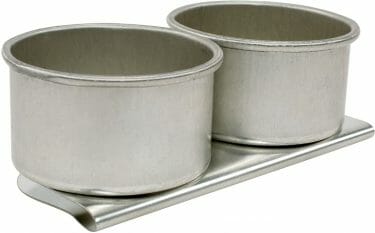
I’ve discovered that the advantage of these oil paint for miniatures is that I can use regular water to mix my colors before using them. I don’t have to use a solvent. I can also easily clean my brushes using regular water and soap.
These are the best oil paints for those who want to travel with their miniature painting kit. You may not need to carry your solvents with you and the associated oil painting accessories. For those who don’t like the smell of oil paints or the solvents, Artisan Water Mixable Oil Colour are a good alternative that work well for miniature painting.
Arteza Oil Paints are a highly-recommended oil paint brand by enthusiast and beginner traditional oil painters. They are come in a variety of colors (this set has 24 tubes).
They are easy to work with and don’t require any additives other than a bit of thinner, depending your miniature painting needs. The paint has a reputed buttery texture, which may be due to the some oil and wax ingredients. Nonetheless, I found a few of the colors especially nice to work with, including the yellows and reds, which are very bright and color rich.
For some of my earlier work with oil paints, I used some of the warmer tones to add depth to my dirt-colored bases and add color filters to rocky features on terrain (i.e., dot filters). The thickness of this oil paint lends itself well to the dot filter technique (see above).
For the cost (~$22 or less than $1 per tube) for the set, these are really good value for those wanting to experiment with a large color palette.
ZenArt Non-Toxic Oil Paints are a high-quality grade oil paint with a reasonable price. Over the years painting miniatures, my curiosity made me buy a lot of art things that I’ve kind of regretted later (like this silly thing). But, when it came to buying paint, I never really considered my “investments” a waste because I always learned something.
I picked up a set of these years ago because of their great reviews for regular artists. The oil paint tubes in this set are huge (45ml) and I don’t expect I’ll run out of my titanium white or burnt umber for years to come.
The reason I got these paints is because of the warmer, earth tones that this oil paint set contained. It has everything you’d want to make washes for almost any miniature in your collection. The burnt or raw umber is great as a Citadel Agrax Earthshade replacement. The burnt sienna works well for vehicle rust effects. Place a small dab of burnt sienna oil paint on the side of your vehicle, e.g., tank, mech, and pull a soft brush over it. Watch how that streak creates a realistic looking rust effect.
Oh, did you make a mistake? Just rub off the oil paint with tissue paper, or a soft brush dampened with mineral spirits.
This is a must-have oil paint set for creating weathering effects and washes for basing your miniatures (e.g., dirt/soil effects), and adding color filters to your models. I highly-recommend this oil paint line. For the price, you get a ton of paint that will last you hundreds or thousands of models, literally.
The Castle Art Supplies Oil Paint Set has a large variety of oil colors that you could use as color washes or color filters. As a budget brand oil paint, you may find some inconsistency between colors in the set. I have only tried the black and green paints, which did seem a bit grainy to me. But, I was using them purely as an oil wash on model bases so it didn’t bother me at all. The oil color darkened the recesses of concrete and stone nicely.
Although the tubes are 12ml (or less than a bottle of Vallejo acrylic paint), you’ll find that oil paints generally last longer than acrylics. My suggested use with these oil paints is to use them over an acrylic base coat. This will allow you to glaze, tint underlying colors, and blend tones without worrying about permanently altering your model (until you varnish over the piece).
The low-cost of this set also lets you experiment with different things without the risk of a heavy investment. For those just starting out, if you’re looking for a variety of oil paints with a bunch of colors to play with, check out this set!
The Meeden Oil Paint Set is the lowest cost brand of oil paint. But, for the price, you get 24 tubes with 12 ml of oil paint. As with the Castle Art Oil Paint set above (#6), you’re getting a wide gamut of colors to experiment with.
Unlike traditional canvas painting, which require more paint to achieve a completed project, you will find that in many cases, you will only use a small dab of oil paint on your miniatures.
This oil paint set is great for creating color filters over your miniatures. This could be for adding subtle color tones to flesh or skin, or vehicular models. I’ve used the violet and emerald green oil paint in this set for accenting flesh tones on larger models.

If you’re looking to add a bit of color to your miniature paint work, the Meeden Oil Paint Set is a great option. Who knows when you’ll want to add a bit of “Cerulean Blue” to your “Yellow Ochre” skin tones?
Grumbacher Pre-Tested Oil Paints are a professional level paint line. This particular set is a great starter for a miniature painter looking to use oil paints in their workflow.
What distinguishes the Grumbacher Pre-Tested oil paint line is the quality of each of the colors. Each oil color has been tested for masstone (i.e., the amount of color density in the paint straight from the tube), mixability, lightfastness, and other attributes. In general, Grumbacher oil paints are great for those who are working on commission and looking for professional oil paints that are reliable and archival grade that won’t fade over time under any condition.
Grumbacher Pre-Tested Oil Paints have been made in America over the past 80 years. Use these paints as you would other oil paints for painting miniatures. You can thin these oil paints with mineral spirits or oil additives. Clean up is easy using soap and water.
8. Gamblin 1980 Oil Color Set
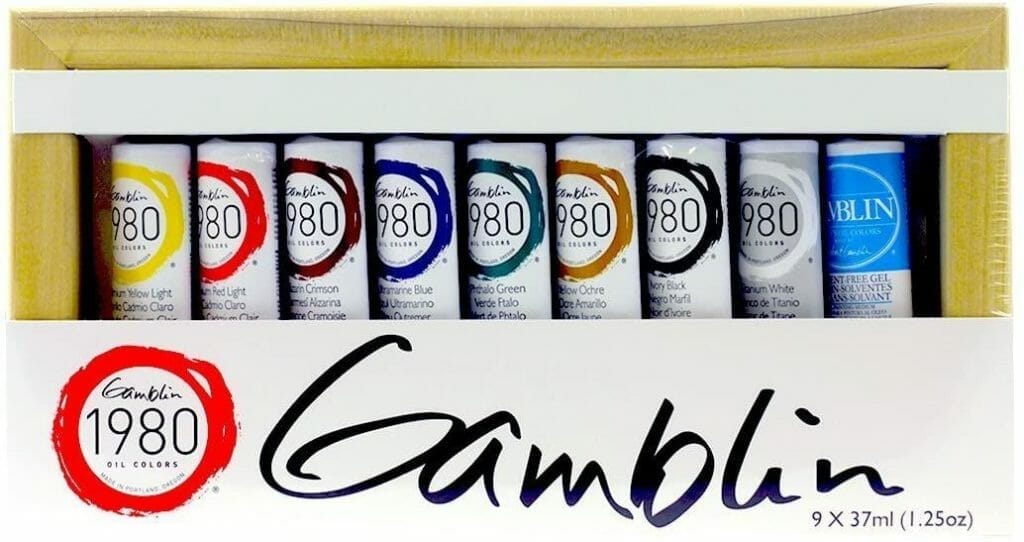
The Gamblin 1980 Oil Color Set is a high-end student grade oil paint produced in the United States. The set shown above has 8 tubes with 37 ml of paint, which is great for painting a lot of miniatures. The core colors you’d probably want for a starter kit of oil paints include: Alizarin Crimson, Cadmium Red Light, Cadmium Yellow Light, Yellow Ochre, Ultramarine Blue, Phthalo Green, Titanium White, and Ivory Black.
With a bit of mixing, you can create nearly any other color you may want. As a student grade oil paint, it isn’t clear if these oils are lightfast or permanent. But, with any miniature paint job with oils, you should protect your work with a few coats of a durable varnish sealant.
If you’re looking for specific colors of oil paint, Gamblin does sell individual tubes apart from the set on Amazon or Blick Art. Overall, for the quality and amount of paint you get with Gamblin Oil Colors, you’ll find these to be a great value for miniature painting work.
Blick Studio Oil Colors are an exclusive oil paint line sold by Blick Art, a major art supply company in the United States. They are a “house brand” that are similar to other well-known oils, such as Sennelier oil paints (not listed here, since I’ve never tried them). The Blick Oil Paint set is a really good value for the quality and range of colors.
Some of the colors, in my experience, do have a bit of excess oil that you may want to wick off with a cardboard or wooden palette before you use the paint. The consistency of the oil paints overall is good. The binder in these oil paints is archival quality safflower oil, which has lightfast properties.
In general, I’ve noticed that the paint viscosity is thicker than other oils that I’ve tried above. Admittedly, I use these paints more for glazing and as filters over acrylic painted surfaces. So I end up mixing these with a bit of mineral spirits and the paint “stiffness” does not bother me.
The pigment density of Blick Oil Color paints is on the lower side, so the coverage is a bit mediocre. But, for the price, you kind of can’t go wrong with these paints if you’re looking for a “high quality bargain”.
Utrecht Artists’ Oils are made in Brooklyn, New York (USA). They have been a go-to brand for many artists for more than 50 years. I own many Utrecht brushes, in fact, for painting miniatures.
Utrecht oil paints are a great quality oil color for the price. You get large 37ml tubes of oil paint that are smooth (e.g., others have described as “buttery”) and blend well, e.g., wet on wet. The white color oils in the Utrecht paint line have been considered stiff, which makes them hard to dispense from the tube and mix. To work with stiff paints, you may want to have some oil additive on stand-by to help you thin out the paint.
For the cost of this set, you are getting vibrant colors in large volumes that will go a long way for painting miniatures. If you visit the Blick Art site, you can pick up specific colors in tube sizes up to 150ml. I’ve been using my 37ml tube of Mars Ivory Black for years to make washes. If you’re painting large busts or wargaming terrain pieces exclusively with oil paints, you may love working with these oil paints.
Bonus: Paul Rubens Artist Oil Paints
The Paul Ruben Artist Oil Paint line is a one of our recent favorites from our testing and a great choice for anyone looking to create beautiful, vibrant works of miniature art. This set includes 18 bright oil colors with high saturation, 60ml large capacity tubes and decent drying time with creamy texture and consistency.
The paints are perfect for creating that extra vibrant boost in your miniature painting. See our full review of these paints for wargame modeling and painting. miniatures with their vibrant colors and fairly good drying time. They also have a high quality pigment that ensures your work will last for years to come.
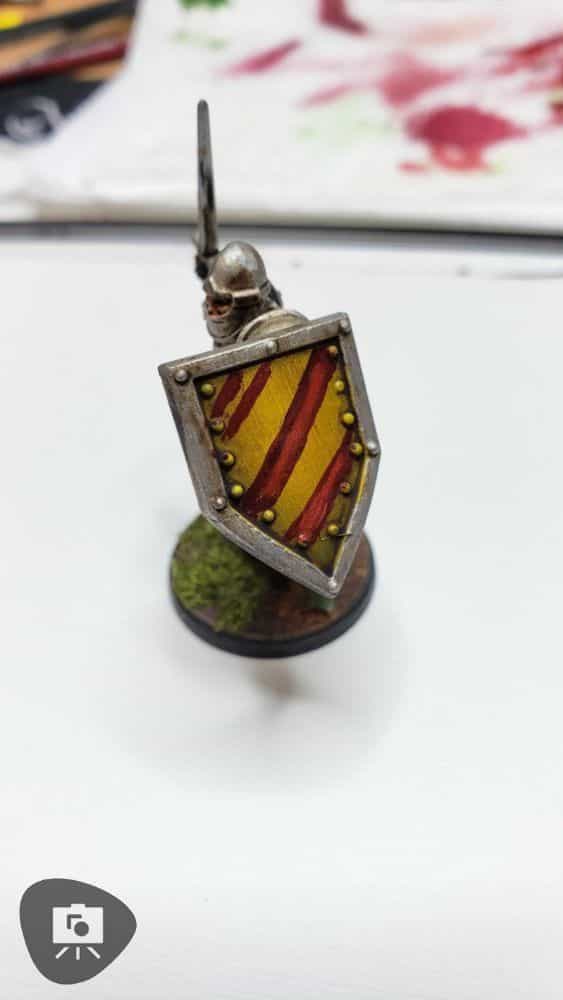
Best of all, they are simple to use straight from the tube or thinned with clear mineral spirits. You them as a wash or over an acrylic basecoat. Oil paints like these exemplify the versatility of the medium. In our experience, they work well with simple techniques on 28-32mm scale models, and the huge tubes means that a single purchase will last you years, if not decades. Take a closer look!
Essential Supplies for Painting Miniatures with Oil Paints
- Solvent – thin your oil paints (i.e., make them “lean”).
- Oil additive – thin your oil paints (i.e., make them “fatty”)
- Fast drying medium – speed up your oil paint cure time and get your project done faster
- Paper towels – Always a useful thing to have for painting miniatures
- Synthetic brushes – These last longer than Kolinsky sables or natural haired brushes, and you don’t need all that precision with oil paints
- Brush soap – For clean up and brush care, simple as that
- Varnish – Protect your hard work and your oil painted surfaces
- Hair dryer – Speed up oil paint and varnish drying
Conclusion
Oils paints have long dry times that give you the opportunity to blend colors on your models at a comfortable pace. Although oil paints require some technical know-how to use them effectively, they are like any other miniature painting tool. With practice, you’ll learn how and where they work best. You may even be surprised that you didn’t start using oil paints sooner.
Oil paints are traditionally a medium for canvas painters. But, what is art but a personal avenue to discovery? I highly-encourage anyone who paints miniatures to incorporate the use of oil paint in their work. You’ll be amazed at some of the innovative and novel effects you can come up with.
Whether you’re painting for a display model, e.g., a bust, or for wargaming miniatures like Warhammer 40k, Age of Sigmar, or other tabletop gaming models, oil paints are a powerful and versatile medium that can add a unique flair to your work.
I hope you enjoyed this article, and found more inspiration for your miniature hobby.
If you have any comments or feedback for this article, I’d love to hear from you! Comment below 😃
Happy oil (or acrylic) painting!



Tangible Day on YouTube (Miniatures and More!)

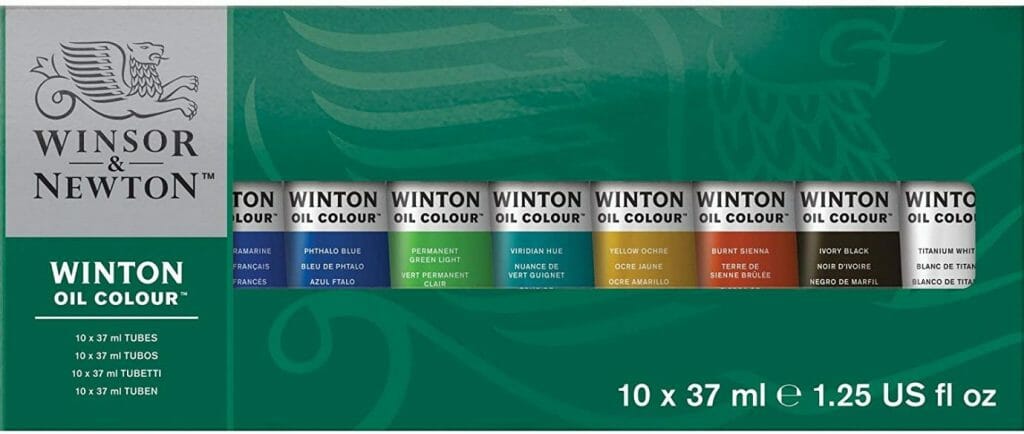
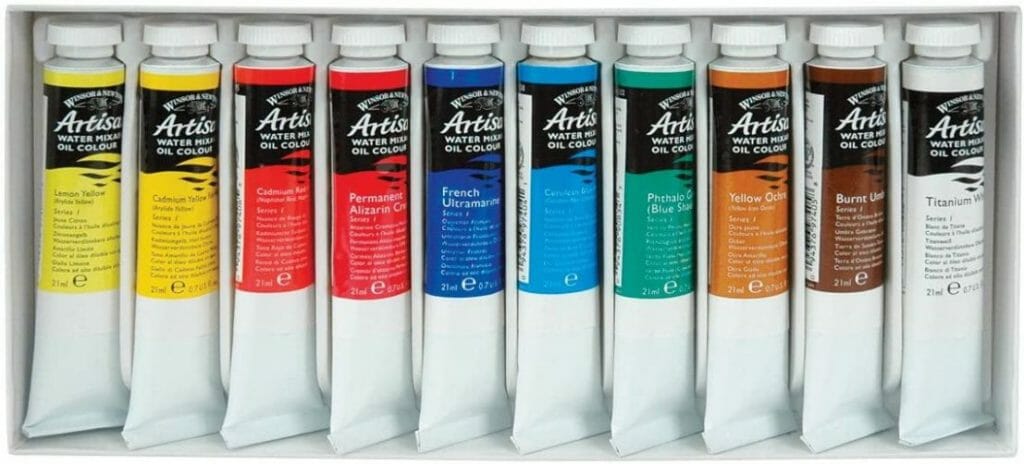
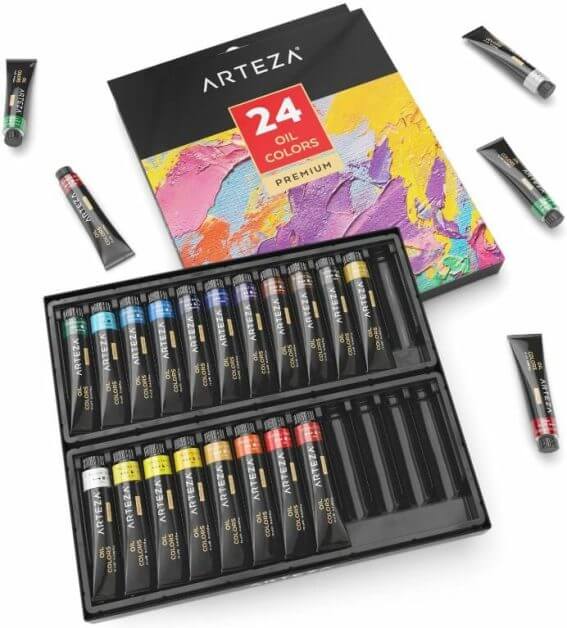
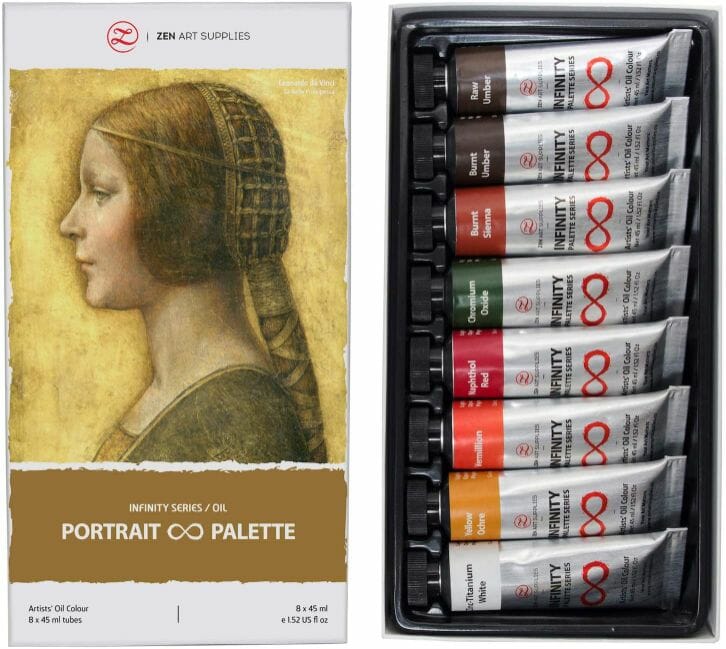
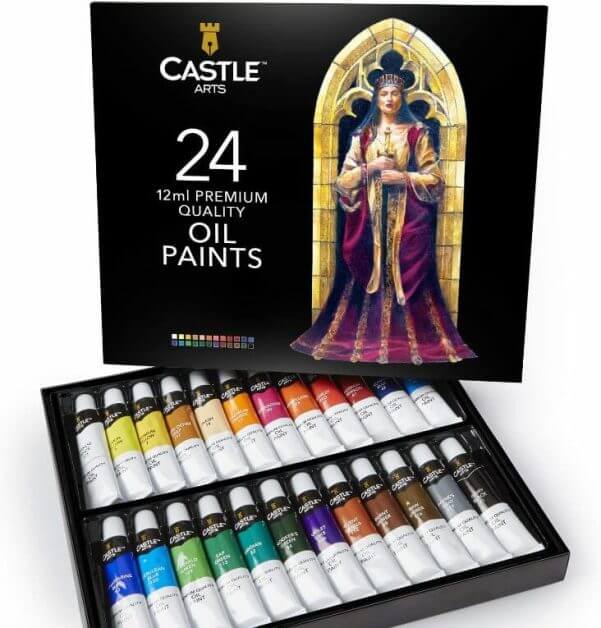
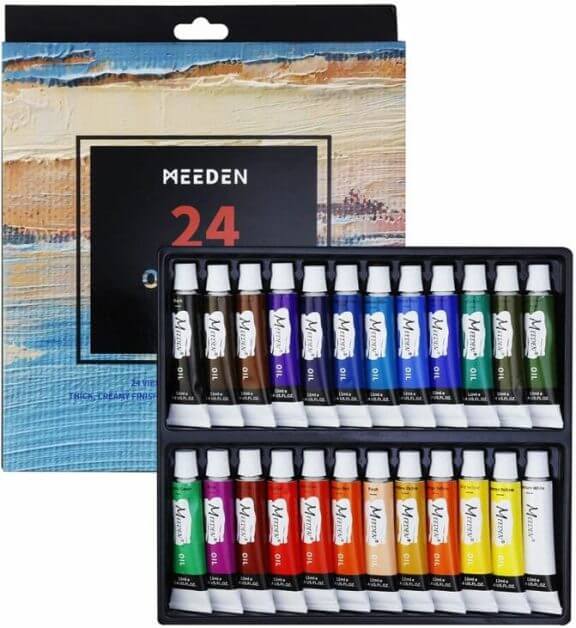
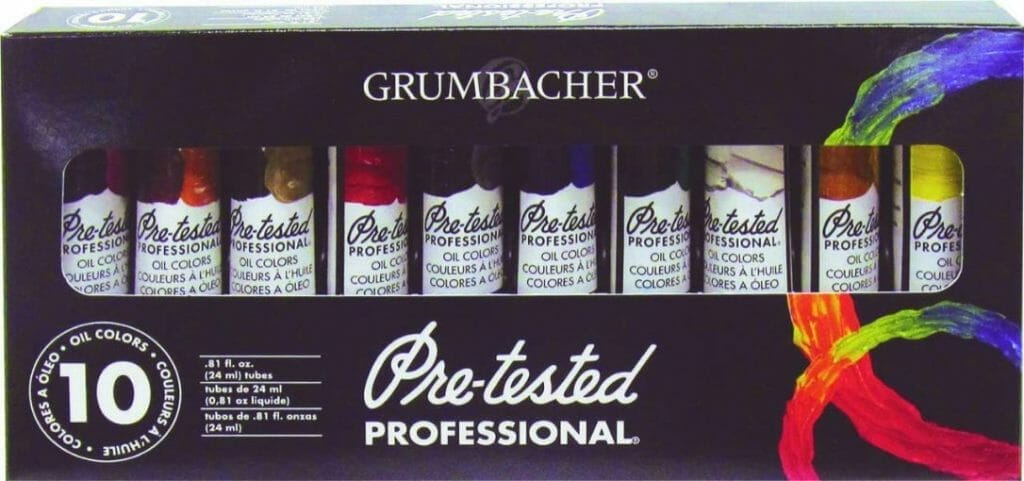

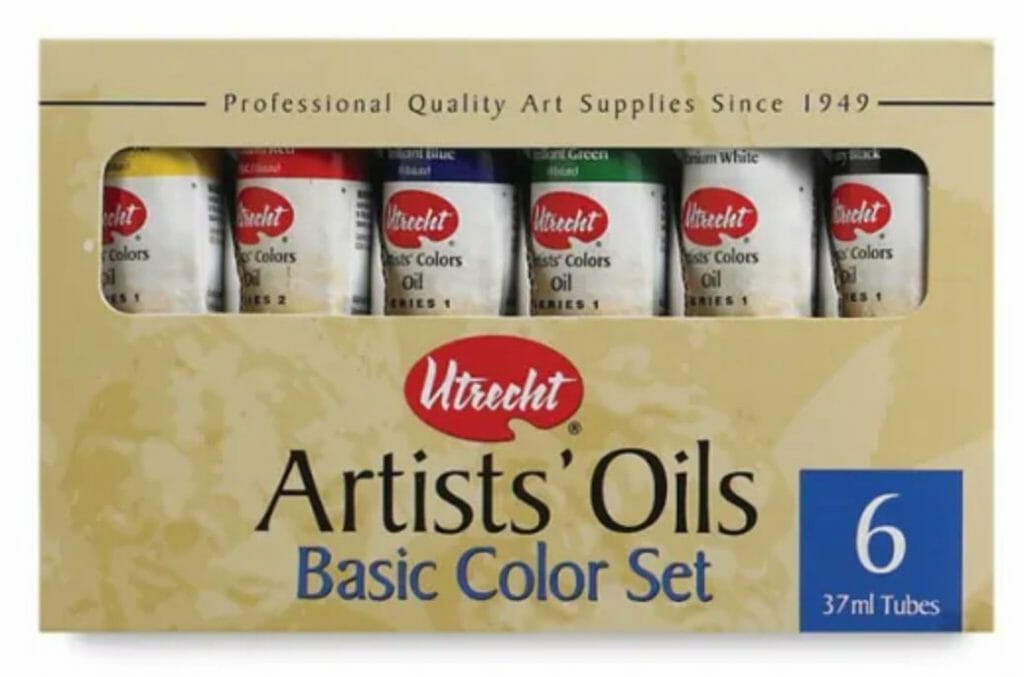

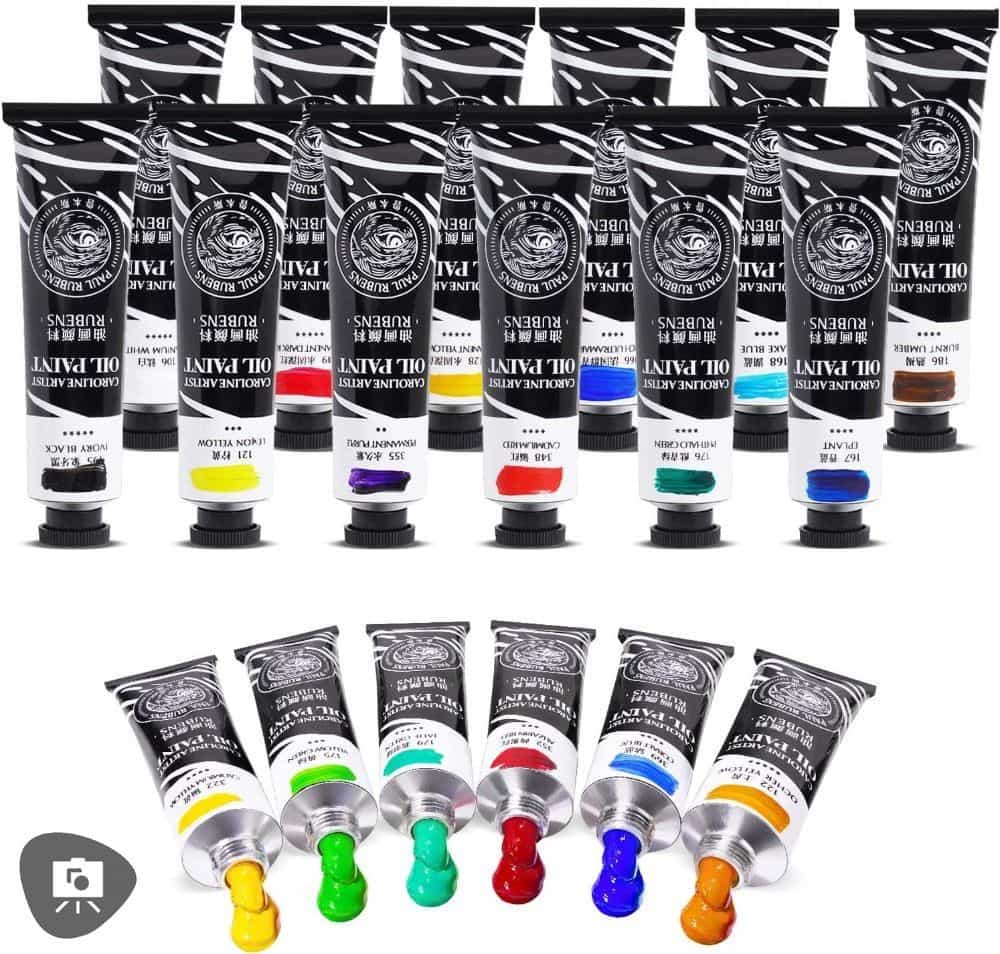


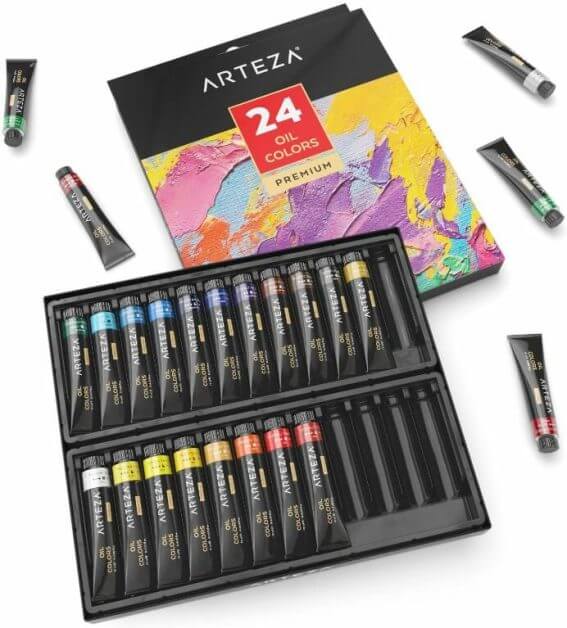
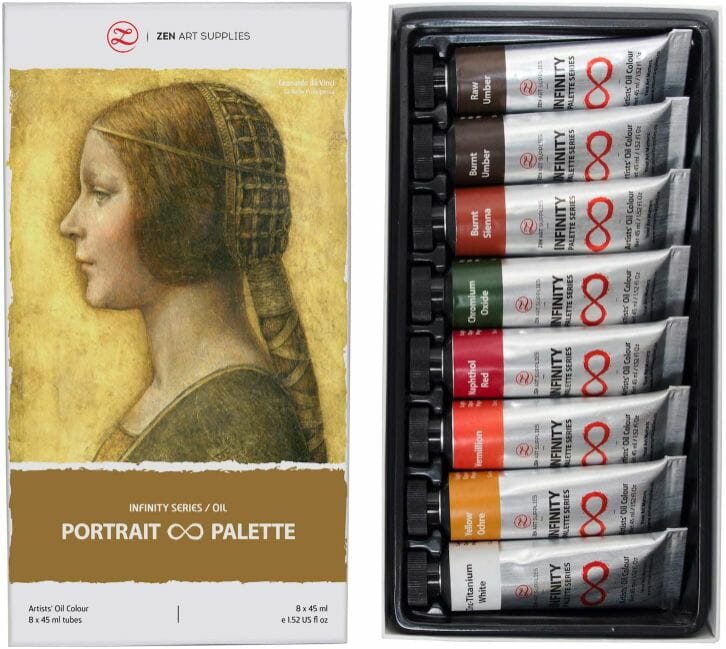
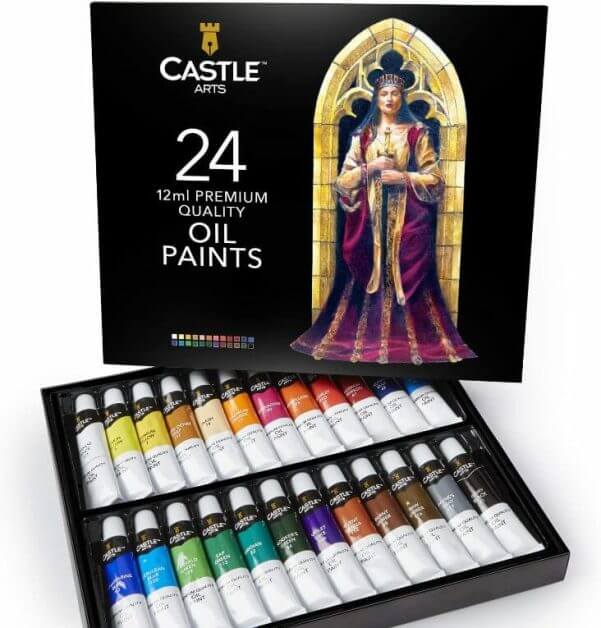
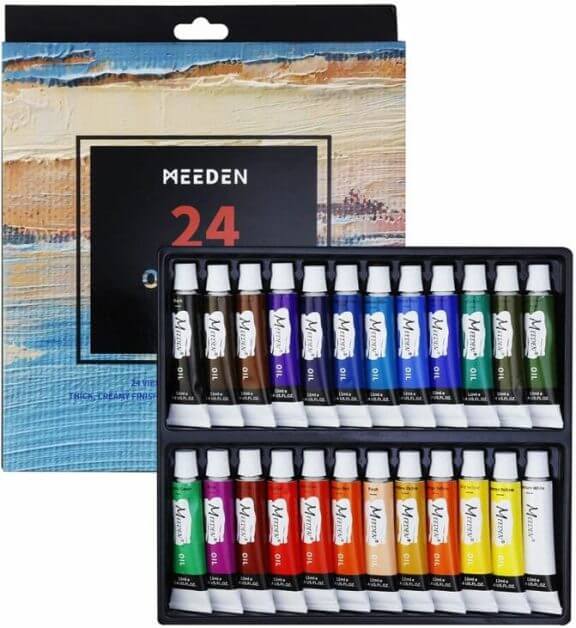
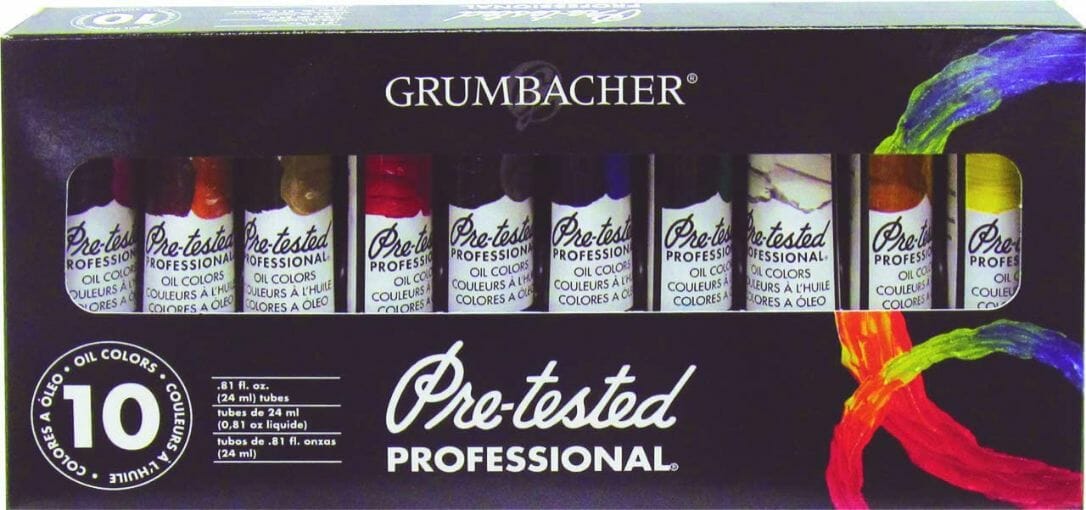
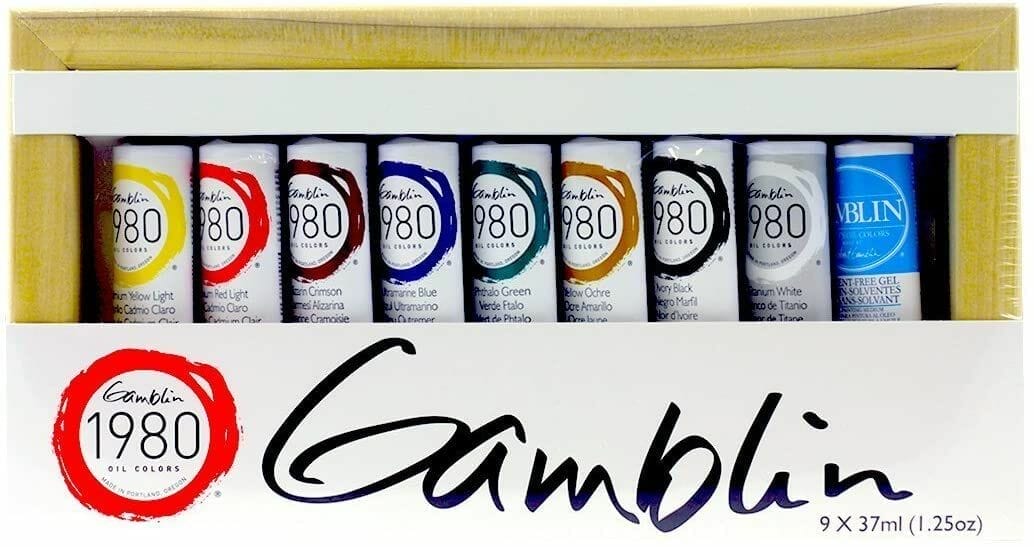

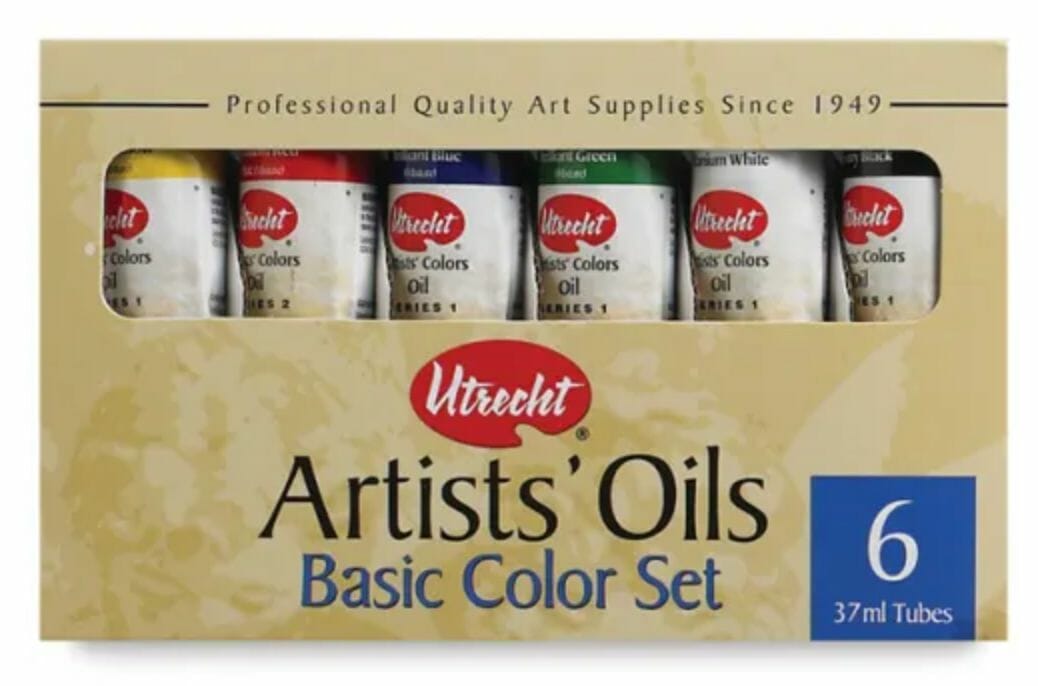
Thank you for this article I learnt a lot. I will apply these techniques on my next models.
Although I think the list of oil paints should not be titled “The Best” but your own top favourites. Have you also tested the excellent oil brands such as Van Gogh, Holbein, Sennelier, Schminke, and Daler Rowney? These are superior quality oils and none of them are in your top ten list.
The “best” is a catch phrase – I agree I should revise it at some point. I’ve tried abteilung 502 paints (but need more experience with them). I have a small sample set of Van Gogh but didn’t splurge there for testing. Good Oils aren’t cheap! I only have Daley rowney acrylic inks (which I included in another review). The focus here was utility for scale models and miniatures. Overall, it’ll come down to preference. The most versatile I’ve found are the winton oils. Imho they are the best value for those of us with a limited hobby budget.
I will look forward to your review on the Abteilung 502 oils, I have some but have never used them, well not yet anyway. I would also like to know the differences in oils in the way of transparent, semi transparent and opaque and when to you which. Thank you.
Pingback: A Reference Guide for Acrylic Miniature Painting (Basecoats, Layers, and Glazes) - Tangible Day
Pingback: 10 Best Oil Paints for Painting Miniatures (Guide and Review) - Toy Newz